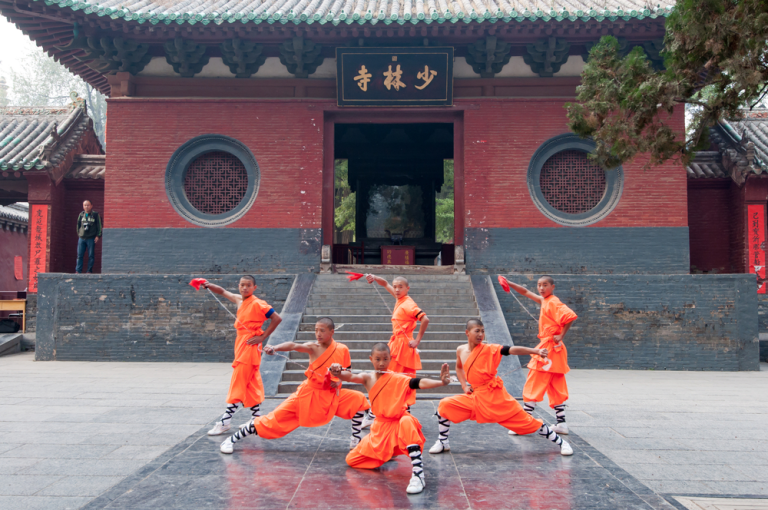The History and Origins of Wing Chun Kung Fu
By Maurice Novoa a master under the Yuen Kay Shan, Ip Man and Pan Nam lineages.
Introduction
Wing Chun Kung Fu, a highly respected and influential martial art, has a fascinating history and origins that date back centuries. Developed by skilled monks, it has evolved into a well-rounded system known for its efficiency, practicality, and effectiveness in combat. This article delves into the captivating journey of Wing Chun, exploring its origins, key figures, and its impact on the martial arts world.
Origins at the Shaolin Monastery
The roots of Wing Chun can be traced back to the legendary Shaolin Monastery, which served as a sanctuary for martial artists seeking enlightenment and training. It is believed that five elder monks from the monastery created the style as a response to the oppressive rule of the Hons and Manchus in China. Their aim was to develop a martial art that could be learned within a relatively short period of time, yet possess the capability to defeat styles that required a decade or more to master.
Persecution and Dispersal
The rulers of the time became aware of the monks’ revolutionary intentions and set fire to the Shaolin Monastery. As a result, the five elder monks were forced to disperse and seek refuge elsewhere. They carried with them the knowledge and principles of Wing Chun, ensuring its survival even in the face of adversity.
Concealment in the Chinese Red Boat Opera
To protect themselves from prosecution and continue practicing Wing Chun, some of the monks sought refuge in the Chinese Red Boat Opera, a popular entertainment form of that era. Within the opera troupe, they concealed their skills while performing and used their theatrical activities as a cover. This allowed them to continue refining their techniques in secret.
The Yim Wing Chun Legend
During this period, the tale of Yim Wing Chun emerged as a way to deflect suspicion and maintain the secrecy of Wing Chun. The story, which involved a woman learning the style from a Buddhist nun to combat a warlord and avoid an unwanted marriage, provided a convenient disguise for the forbidden martial art. Over time, this story became ingrained in the folklore, eventually being accepted as historical fact rather than a simple fable.
Grandmaster Yuen Kay Shan’s Contribution
Grandmaster Yuen Kay Shan played a pivotal role in the evolution of Wing Chun. He was a wealthy individual, owning a fireworks monopoly and working as a government lawyer. This affluence and influence granted him the freedom to learn the forbidden style openly without fear of prosecution. Yuen Kay Shan also sought additional training by paying a significant sum to an imperial bodyguard, enriching his knowledge of kung fu.
Development of Wing Chun Forms
Yuen Kay Shan condensed the various techniques and principles of Wing Chun into three primary forms that are still practiced today. These forms are:
Siu Lim Tao – Also known as “Little Idea,” Siu Lim Tao focuses on developing Chi power, cultivating internal energy, and laying the foundation for more advanced techniques. It involves practicing precise blocks, punches, and hand movements while maintaining proper structure and body alignment.
Chum Kiu – Known as “Sinking the Bridge,” Chum Kiu builds upon the fundamentals learned in Siu Lim Tao. This form emphasizes footwork, body positioning, and bridging techniques that enable the practitioner to effectively engage and control the opponent. Chum Kiu also teaches techniques for breaking an opponent’s arms and incapacitating them.
Biu Jee – Referred to as “Thrusting Fingers,” Biu Jee focuses on developing powerful finger strikes using knife hand and elbow strikes. This form teaches advanced techniques for close-quarter combat and recovery from compromised positions. It emphasizes explosive energy, speed, and precision in executing devastating strikes.
Furthermore, Yuen Kay Shan also incorporated training forms for the Dragon Pole and Butterfly Swords, expanding the arsenal of techniques.
Sum Nung and Yuen Chai Wan
Sum Nung, a dedicated disciple of Yuen Kay Shan, played a crucial role in the transmission of Wing Chun knowledge. Despite Yuen Kay Shan’s wealth, he taught purely for the pleasure of sharing his art rather than for financial gain. Sum Nung, having trained diligently under Yuen Kay Shan, became an impressive fighter. He learned from Yuen Kay Shan’s friend, Cheung Bo, who owned a restaurant and was well-versed in Wing Chun.
Yuen Chai Wan, the older brother of Yuen Kay Shan, was also a practitioner of Wing Chun. Following the civil war in China, Yuen Chai Wan relocated to Vietnam, where he established the Vietnamese Wing Chun lineage, further expanding the reach and influence of the art.
Ip Man and the Popularization of Wing Chun
In more recent times, the name Ip Man has become synonymous with Wing Chun. After fleeing the political unrest in China, Ip Man settled in Hong Kong and began teaching Wing Chun. One of his most notable students was the legendary Bruce Lee, who would go on to achieve worldwide fame as an actor and martial artist. Bruce Lee’s immense success contributed significantly to the popularity and recognition of Wing Chun, ensuring its place in martial arts history.
Conclusion
The history and origins of Wing Chun Kung Fu are steeped in legend, perseverance, and the dedication of skilled practitioners. From its clandestine beginnings at the Shaolin Monastery to its growth and evolution under influential figures like Yuen Kay Shan and Ip Man, has solidified the style reputation as an effective martial art system. Today, Wing Chun continues to inspire and captivate practitioners around the world, preserving its rich heritage and timeless principles.

